Question: How much rioting is too much? Answer: It depends on who’s doing the rioting!
You may not (and should not) like that response, but it’s what hardcore American partisans believe. Whether a riot is an insurrection or “the language of the unheard,” whether assaulting someone warrants prison or a pardon turns on the justness of the cause.
The violence in Los Angeles this weekend presents a twist on the familiar question. How much rioting is “enough” to justify the president inserting the military into the situation?
If the yardstick you’re measuring against is the George Floyd riots of 2020 or the Rodney King riots of 1992, the last three days in L.A. were a nothingburger. The unrest targeting federal immigration officers has been confined to a few neighborhoods or even a few blocks, with most of the city entirely unaffected. The supply of inflammatory footage on social media was small enough that some right-wing celebrities (and Republican senators) were stuck recycling images from 2020 for agitprop.
But if the yardstick you’re measuring against is people not lighting things on fire in the middle of the street with impunity, yesterday was alarming. Several cars were torched. Police vehicles were smashed with rocks by rioters on an overpass. Los Angeles police chief Jim McDonnell told reporters that some miscreants had broken up cinderblocks and handed out chunks to the crowd to hurl at cops.
Asked if his force needed support from the National Guard, McDonnell replied that he would have called for backup from other law enforcement agencies before looking to the military. But he didn’t exactly say no: “Do we need them? Look at tonight, this has gotten out of control.”
Whether he needs them or not, he’s got them. On Saturday, Donald Trump ordered 2,000 members of the National Guard to Los Angeles to “temporarily protect ICE and other United States Government personnel who are performing Federal functions, including the enforcement of Federal law, and to protect Federal property.” The law he cited authorizes him to do so in order to suppress “a rebellion or danger of a rebellion against the authority of the Government of the United States.”
Normally, the local guard is under the command of its home state, with the White House getting involved only if the governor requests a more robust military response due to the scale of public disorder. (That’s what happened in California in 1992.) Not only did Gov. Gavin Newsom not ask Trump for help, though, he called on him to rescind his order and sued him when he didn’t. Not since 1965 had the president seized control of a state’s guard and ordered it to deploy over a governor’s objections, but here we are.
Trump isn’t going to rescind the order. In fact, his blowhard defense secretary has put America on notice that the U.S. Marines at Camp Pendleton in California are on “high alert” and prepared to deploy to L.A. if needed.
How much rioting is enough to justify the president inserting the military into the situation?
Distrusting Newsom.
The problem with analogizing this weekend’s disorder to major riots like those in 1992 or 2020 has to do with the targets.
In those earlier cases, it was local businesses and local cops who took the brunt of the violence. That’s important because the president shouldn’t be cracking down on local crime uninvited, frightening though it may be. If the White House gets in the habit of deploying troops whenever a city isn’t doing “enough,” the taboo against using the military internally will collapse.
The targets of the anger in L.A. this weekend weren’t local, though. They were federal immigration officers.
Word came down last month from on high that ICE needs to boost its arrest numbers pronto, so the agency has begun picking the lowest-hanging fruit among illegal immigrants, raiding businesses like Home Depot. That’s what inspired Friday’s protest in Los Angeles. Hundreds of demonstrators gathered outside a federal building to rally against those raids and eventually made their way to a federal detention center where, allegedly, some of them breached the structure, assaulted ICE officers, slashed tires, and defaced public property.
The next day, federal agents were spotted gathering in an industrial park in L.A.’s Paramount neighborhood, presumably preparing to stage another raid. As word got out, local residents tried to block the streets. A crowd of 300 or so people confronted the officers.
Sending in the guard in this case isn’t a matter of Trump inserting himself into local unrest that has nothing to do with him; it’s a matter of providing reinforcements to defend immigration agents as they carry out their lawful duties. I’m mildly surprised, in fact, at how restrained his executive order was in that regard: Instead of invoking the Insurrection Act and authorizing the guard to start arresting illegals themselves, he restricted their duties—for now—to “protecting” other federal officials.
Without the guard, who’s going to protect ICE officers from angry pro-immigrant mobs as those officers go about rounding up thousands of Californians? Gavin Newsom? Come on.
I have no faith that the governor or Los Angeles Mayor Karen Bass will supply state and city police to do that. For one thing, local cops probably lack the manpower. For another, as Newsom reminded everyone this weekend, “It's not their job to assist in federal immigration enforcement.” But even if local police were willing and able, the politics of abetting Trump’s nationwide dragnet of immigrants are poisonous for Democratic officials, particularly someone like Newsom who’s hoping to run for president in 2028.
The more stories there are of otherwise sympathetic illegals being snatched by ICE from their jobs or homes, and there will be many, the harder it’ll be for him to explain to furious liberals why he gave the snatchers a police escort. Some of Trump’s own supporters are mortified that he’s branching out from deporting violent criminals to targeting otherwise law-abiding people, never mind that he was clear about his intentions during the campaign. If Republicans feel clammy about what he’s doing, imagine how a party whose left-most wing opposes the idea of borders on principle will feel.
The imperious way in which Trump commandeered the guard has also antagonized Californians, making it harder for state officials like Newsom to cooperate with him. “There is no emergency, widespread threat, or out-of-control violence in Los Angeles,” declared Rick Caruso, the “shadow mayor” of Los Angeles who ran as a quasi-Republican against Bass in 2022, in a tweet on Sunday. “And absolutely no danger that justifies deployment of the National Guard, military, or other federal force to the streets of this or any other Southern California City.” That was the consensus reaction among local Democrats—that Trump has grossly inflated the extent of the “rebellion” in L.A. as a pretext to deploy American troops against American citizens.
How does Newsom turn around in a moment like that and offer to have California cops perform the role that the guard is now performing? If Trump’s mini-military incursion in L.A. successfully bullies America’s bluest big state into providing police support for ICE, that’s not a political win for the governor. The protesters don’t want immigration raids to be carried out by local officials. They want the raids to stop.
There’s another reason not to trust Newsom. Scroll through his Twitter feed and you’ll find it overflowing with complaints about Trump, punctuated only sporadically by warnings to the protesters not to behave violently. And when he does mention violence, he lays the blame for it entirely at the president’s feet. “Don’t give Donald Trump what he wants,” he implored the demonstrators at one point. “The federal government is sowing chaos so they can have an excuse to escalate,” he complained elsewhere.
The federal government is “sowing chaos” by … enforcing immigration law?
Other Democrats also appealed to the rioters by urging them not to reward the White House with the “spectacle” of violent confrontations. “This is a reckless attempt to provoke chaos,” state Sen. Sasha Renée Pérez warned of Trump’s guard deployment. “Don’t fall into their trap.” Every call for calm is welcome, I suppose, but watching progressive leaders struggle to condemn riots on the merits without invoking Trump seemed only to prove the point with which I opened this piece. “Qui bono?” should not be your utmost concern when rioting breaks out. If it is, go figure that some Americans might conclude that you’re afraid to offend progressives by restoring order unapologetically.
You can’t trust Gavin Newsom to throw everything he’s got at the miscreants tossing rocks at cops. Of course, you can’t trust the other key player in this drama either.
Distrusting Trump.
It was so predictable that Trump would deploy the military against Americans in his second term that I did predict it—more than once. This was written four days before Election Day:
There will be a serious effort to deport illegal immigrants en masse, successful or not; it will draw enormous disruptive protests, particularly if mass deportation is as “bloody” as Trump expects; and he will demand that his deputies crack down hard on protesters with the sort of “iron fist” he admires in Xi Jinping.
The protests in L.A. aren’t “enormous” (yet) and we haven’t seen the full iron fist (yet), but, “It’s possible that this [first order] is meant to both be and look modest so that, if and when it ‘fails,’ the government can invoke its failure as a basis for a more aggressive domestic deployment of troops,” Georgetown law professor Steve Vladeck theorized. The fact that Pete Hegseth was threatening to use the Marines even before the guard had arrived in Los Angeles—which was also predictable, and predicted—shows you how eager the White House is to escalate.
Turning the military’s guns on his political enemies is one of Trump’s most cherished fantasies, in fact. During the 2020 riots, he allegedly told aides that “the Chinese generals would know what to do” and called his top defense personnel “f—ing losers” when they balked at his idea of letting active-duty troops shoot at demonstrators. Last October he was asked about the risk of violence on Election Day and warned about “the enemy from within,” adding, “I think it should be very easily handled by, if necessary, by National Guard, or if really necessary, by the military, because they can’t let that happen.”
Those comments are what convinced his former chief of staff, John Kelly, to come forward and disclose some of the hair-raising things Trump had said to him during his first term. “Mr. Trump was repeatedly told dating back to his first year in office why he should not use the U.S. military against Americans and the limits on his authority to do so,” the New York Times reported, citing Kelly. “Mr. Trump nevertheless continued while in office to push the issue and claim that he did have the authority to take such actions, Mr. Kelly said.”
It’s a weird but true fact about Donald Trump that he’s quite reluctant to use U.S. soldiers abroad (and good for him) but quite eager to use them here at home. And given the way his mind works, I think there’s logic to that. Overseas, his ability to impose his will is limited in all sorts of ways—by other nations’ military power, by his endless quest for “deals,” by the strong isolationist strain in his populist base. But in the United States, it’s limited only by the courts, and there’s nothing the courts can do to stop him if he gives an order to send the Marines into Los Angeles.
What’s the bar for giving that order, a reporter asked him on Sunday? “The bar is what I think it is,” the president replied. And that’s basically true: No one’s going to intervene and send the Corps home if the insurrectionist-in-chief concludes that five Waymos being lit on fire justifies invoking the Insurrection Act.
On a basic level, I suspect, he struggles to even understand the argument against using the military against political enemies. If you have leverage as vast as command of the world’s most powerful war machine, why wouldn’t you use it against people you hate? His entire model of domestic government is deterrence based on ruthlessness; imagine how many future protests he could deter by mowing down a few rioters in L.A. The Chinese generals would know what to do.
So when California Democrats warn demonstrators that they’re playing into Trump’s hands by behaving violently, they may sound weak and unserious, but they’re correct. For the first time in American history, there’s reason to think the president wants to see a city burn because it’ll give him an excuse to normalize some terrifying new authoritarian power grab. In the name of law and order, we elected a guy who’s more dangerous than the chuds chucking cinderblock chunks at the LAPD. Every right-winger on social media today who’s foursquare behind his guard deployment is either willfully ignoring that fact or wants a Tiananmen Square to call their own.
All of which should be enough to prove the case that Trump is at least as untrustworthy in this matter as Gavin Newsom is. But if you want further evidence of bad faith, here are a few questions to ask yourself.
If what’s happening in L.A. amounts to a “rebellion” so formidable that the president needs to deploy the National Guard to suppress it, what was he doing ringside at a UFC fight on Saturday night? George W. Bush wasn’t at the movies the day after 9/11, was he? Like “invasion” and “emergency,” “rebellion” is now a word devoid of all meaning except as an incantation to unlock some esoteric statutory authority Trump is craving.
Since when does the president care at all what happens in California? In the past, his approach to disasters in the Golden State has been to either threaten to cut off the funding needed to cope with them or to deny their requests for emergency assistance. Somehow, though, two ugly days for ICE in L.A. is all he needed to see to scramble troops under a federal statute that hasn’t been used since before I was born.
Why is he allowing ICE agents to wear masks while performing their duties? I realize that some of them have been threatened, but every branch of law enforcement runs that risk. IRS officials don’t get to cover their faces, and everyone hates them. The FBI is unpopular on both sides of the aisle, and they don’t get to hide either. Letting cops obscure their features probably makes their jobs more dangerous by encouraging the officers to behave unaccountably and the public whom they’re ostensibly serving to fear them. It’s creepy banana-republic nonsense.
Relatedly, where did the president get the idea that he can declare “from now on, MASKS WILL NOT BE ALLOWED to be worn at protests” and everyone is just supposed to obey?
Is the Department of Homeland Security for or against having the president federalize the National Guard? I ask because it was just last year that Kristi Noem, now the head of that department, called it “a direct attack on states’ rights” when some Democrats suggested that Joe Biden should do it. That was a fine, principled, federalist-minded conservative reaction to an executive conniving to seize governors’ traditional power of commanding the Guard. What changed?
One more: If Trump is so deadly serious about reducing the size of the illegal population that he needs to get the military involved, why is so much of his energy being devoted to “deportation theater” like this weekend’s raids instead of bringing down the legal hammer on American businesses? Make it painful to hire foreign citizens and companies will stop; once they stop, most of those foreign citizens will leave. Is mass deportation a serious program or just a feeble pretext to sate the postliberal right’s desire to see crying families being thrown into the back of an ICE van?
Proper reinforcements.
Ultimately, I land in the same place Vladeck did. “It seems to me that there is something deeply pernicious about invoking any of these [military] authorities except in circumstances in which their necessity is a matter of consensus beyond the President’s political supporters,” he wrote about Trump’s guard order.
That’s a good answer to the question I posed earlier, I think. When is rioting enough to justify the president inserting the military into the situation? When the situation has deteriorated to the point that it’s not just his own base that’s clamoring for troops to crack heads. Eventually, even Democrats will demand that having the guard occupy their city’s streets is preferable to masked degenerates committing wanton arson while waving Mexican flags.
As for the conundrum of how to protect ICE officers in executing their duties, every alternative should be exhausted before the guard is deployed. Local and state police in L.A. have confronted the rioters thus far, and there are many reinforcements that can be called on if needed, as Chief McDonnell noted. The LAPD alone has 9,000 officers, never mind the tens of thousands of cops scattered across other California jurisdictions. As justifiably low as our expectations might be, Newsom and Bass should get to try to quell the unrest before being bigfooted on Day 2 by a trigger-happy authoritarian on the other side of the country. That’s what “states’ rights” means. Right, Kristi?
And if Trump simply must have federal agents backing up ICE, he also has non-military options to assist them. The FBI has local personnel in Los Angeles, of course, and DHS has no less than 80,000 law enforcement officers across its many agencies. They should be the reinforcements of first resort.
The reason they aren’t is because they’re not scary enough. “We’re going to have troops everywhere,” Trump boasted to reporters Sunday, seemingly pleased by the thought of it. His guard deployment is chiefly a show of force, just like his big birthday parade on Saturday, and there’s no substitute for the military when trying to intimidate “the enemy from within.” In a culture of fear, they’re the trump card.
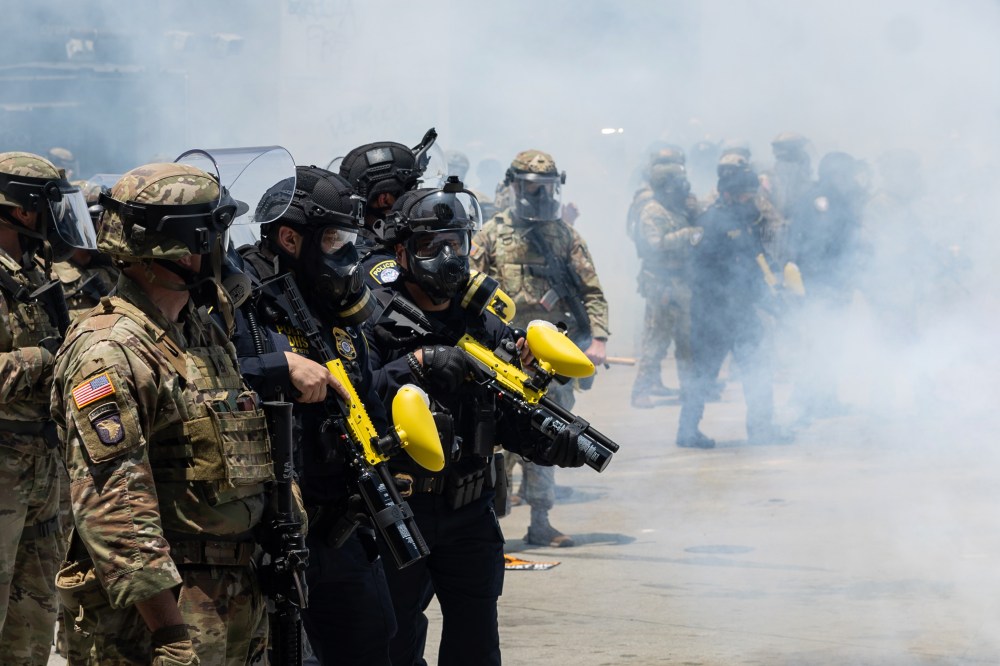

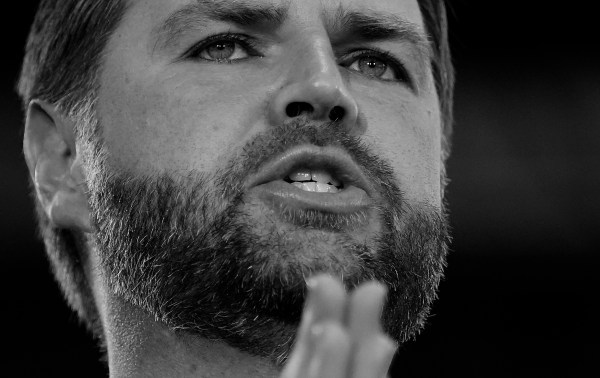
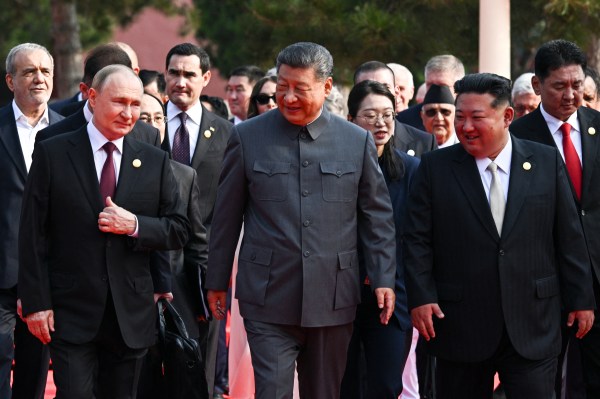
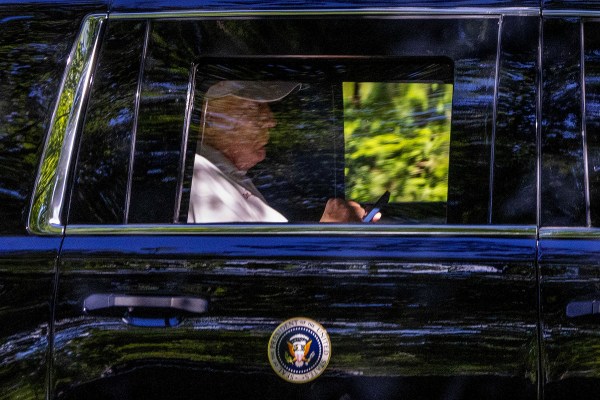

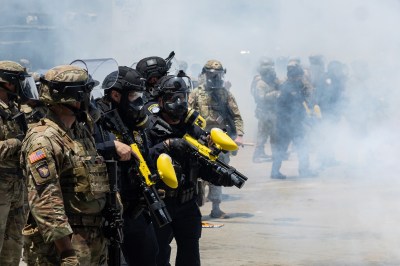
Please note that we at The Dispatch hold ourselves, our work, and our commenters to a higher standard than other places on the internet. We welcome comments that foster genuine debate or discussion—including comments critical of us or our work—but responses that include ad hominem attacks on fellow Dispatch members or are intended to stoke fear and anger may be moderated.
With your membership, you only have the ability to comment on The Morning Dispatch articles. Consider upgrading to join the conversation everywhere.